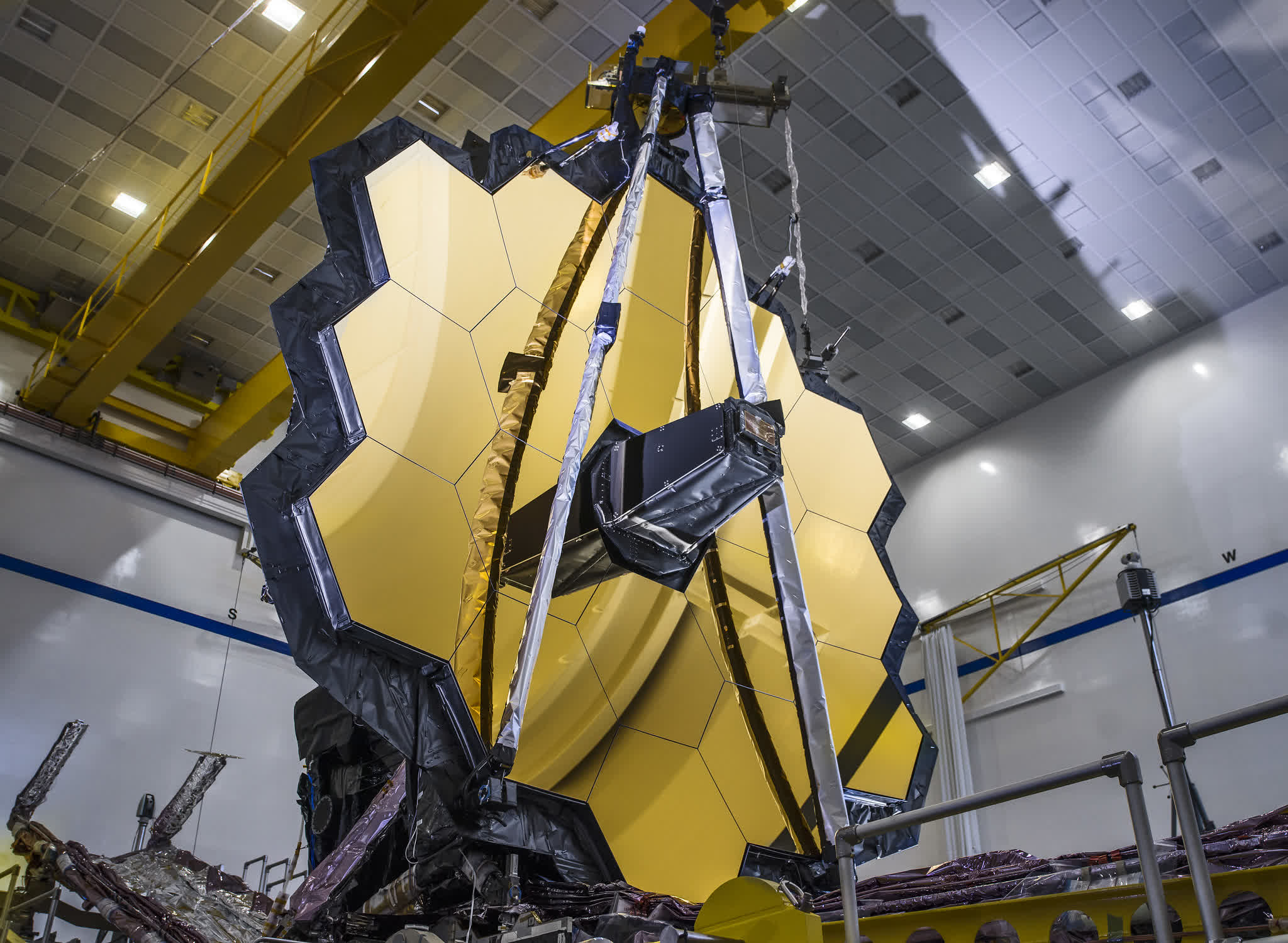What just happened? Born out of an international collaboration between NASA, the European Space Agency (ESA), and the Canadian Space Agency (CSA), the James Webb Space Telescope is mostly designed to provide detailed observations within the infrared part of the electromagnetic spectrum. The latest image captured by the telescope has just confirmed Webb's excellent capabilities for "infrared astronomy."
NASA released a new image captured by the James Webb Space Telescope (JWST), which depicts a star named "WR 124" that is located 15,000 light years away from Earth, in the Sagittarius constellation. WR 124 is a Wolf Rayet-type star, a rare kind of star which is among the most luminous, most massive, and most briefly detectable stars known, NASA explained.
WR 124 was actually one of the first observations made by JWST in June 2022, the space agency said, but the image has been unveiled just now. The Wolf-Rayet phase is a brief condition some stars go through during their lifetime before turning into supernovae, which makes Webb's observations a valuable asset to astronomers studying the life of stars.

WR 124 is 30 times the mass of our Sun, NASA said, and it has "shed" 10 Suns' worth of material so far. The ejected gas moves away from the central body and cools down, forming cosmic dust and glowing in the infrared light that is detectable by Webb's advanced instruments.
The U.S. space agency described Webb's observation process in detail: the Near-Infrared Camera (NIRCam) balances the brightness of WR 124's stellar core and the details in the fainter surrounding gas; the Mid-Infrared Instrument (MIRI) reveals the clumpy structure of the gas and dust nebula of the ejected material surrounding the aforementioned core.
Before Webb, astronomers investigating cosmic dust simply had no way to capture detailed images and information about a dust-rich environment like the WR 124 nebula. And dust, NASA said, plays an essential role in the inner working of the universe as it shelters forming stars, and gathers together to help shape planets, molecules and even the building blocks of life on Earth.
Dust is a fundamental element for our universe, and yet scientists still have to explain why the universe seemingly contains more dust than our current dust-formation theories can justify. The universe is "operating with a dust budget surplus," NASA remarked.
Thanks to Webb's powerful instruments, the mystery of cosmic dust could finally be solved for good. Wolf-Rayet stars like WR 124 can also help astronomers understand some crucial aspects of the early history of the universe. Similar dying stars were responsible for "seeding" a young universe with heavy elements forged in their cores, those same elements which are now common on Earth and elsewhere in outer space.
